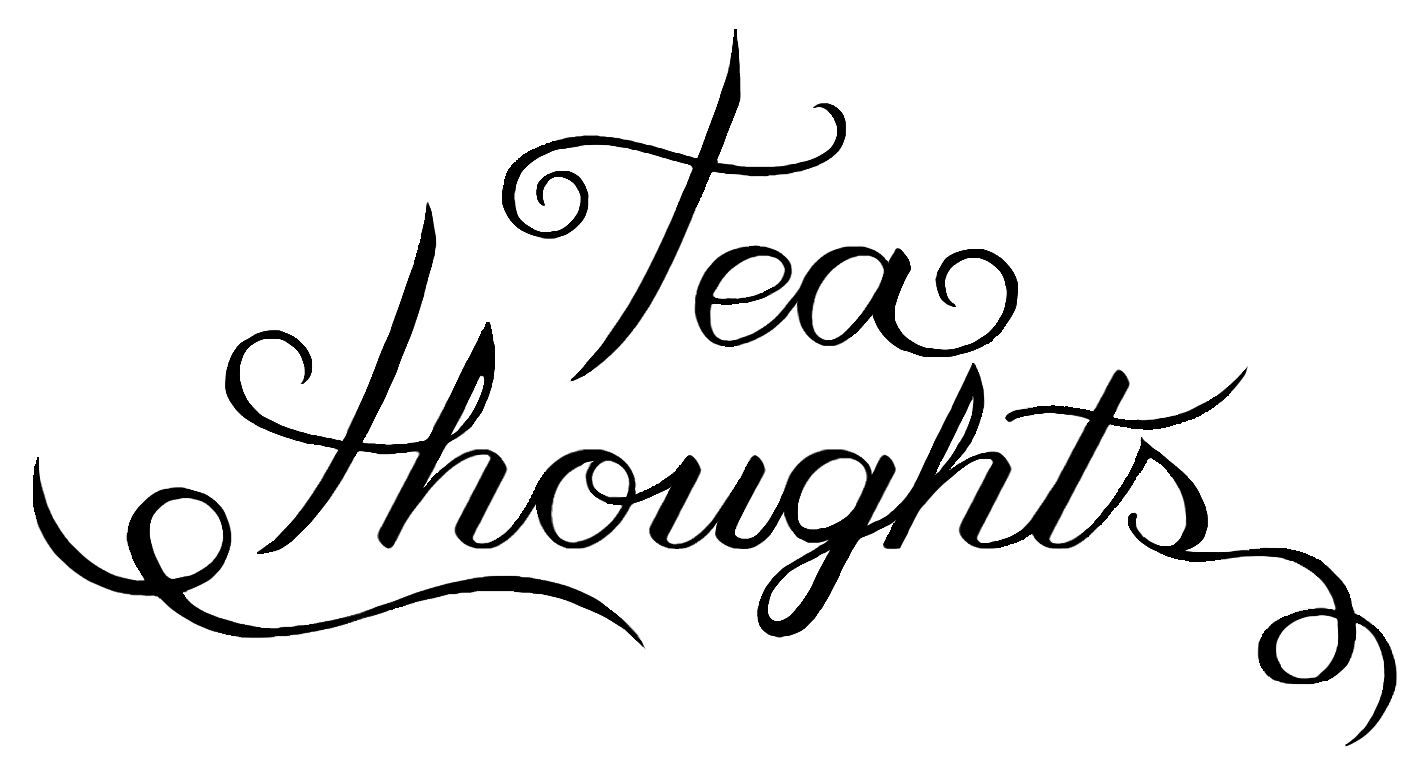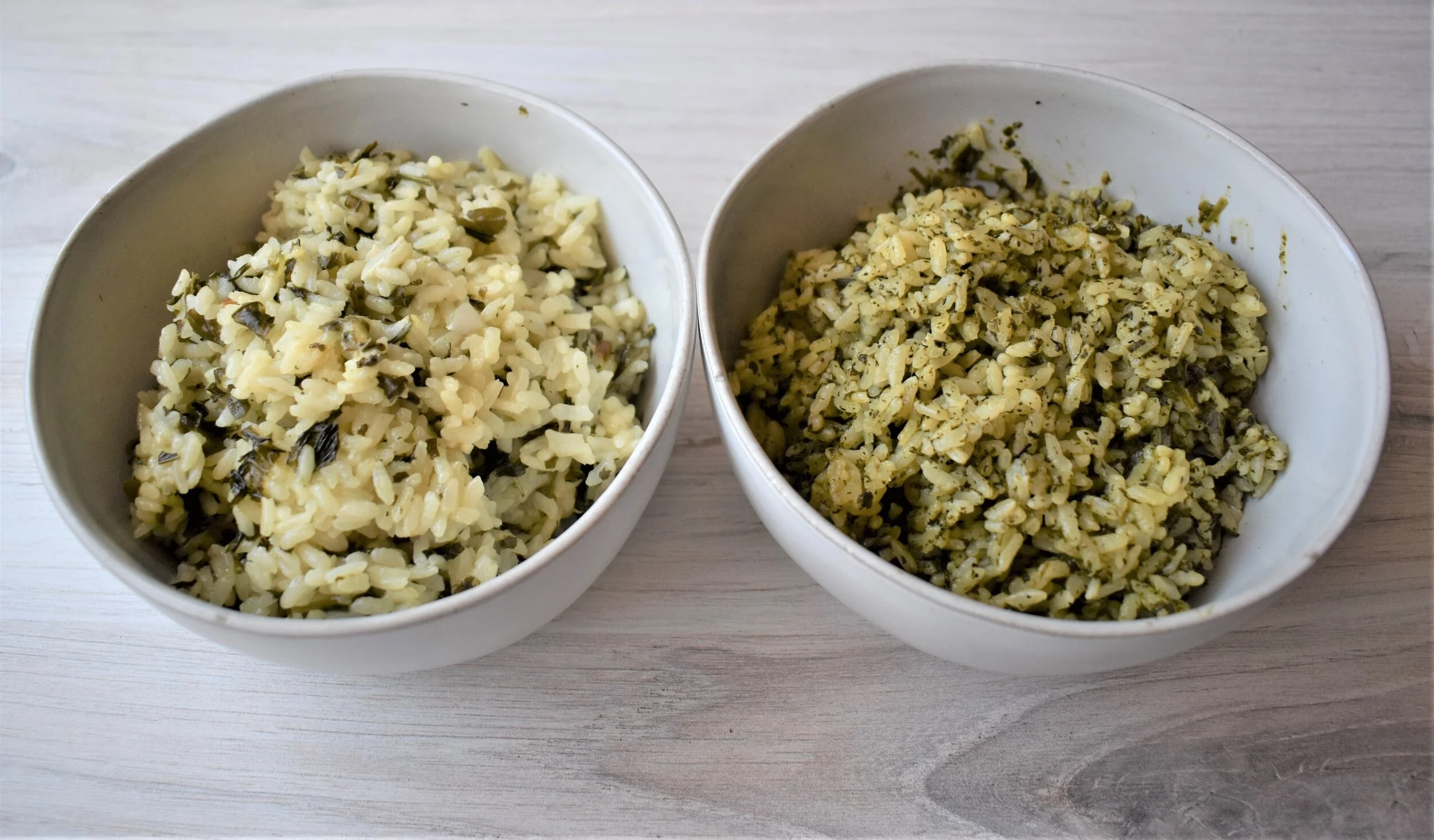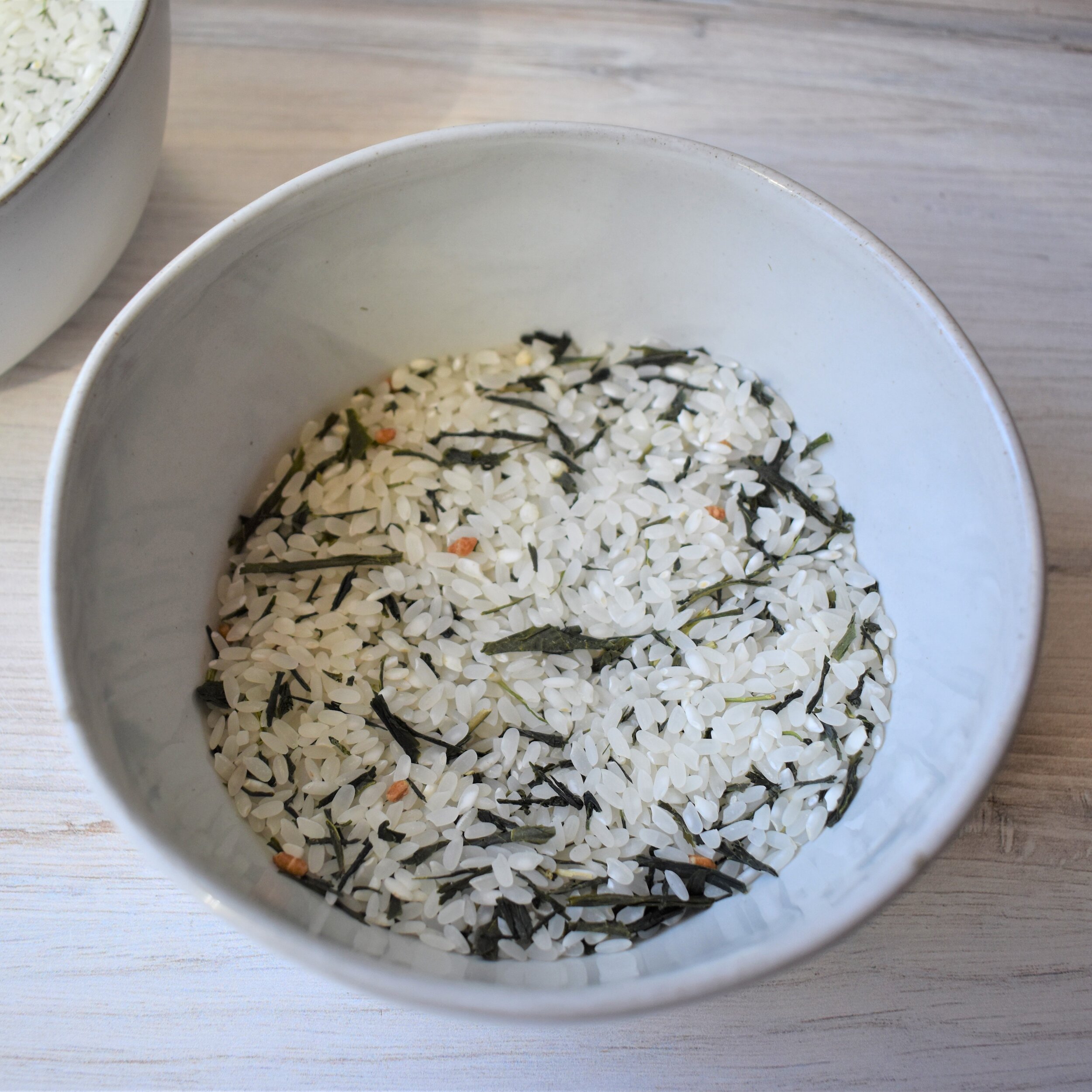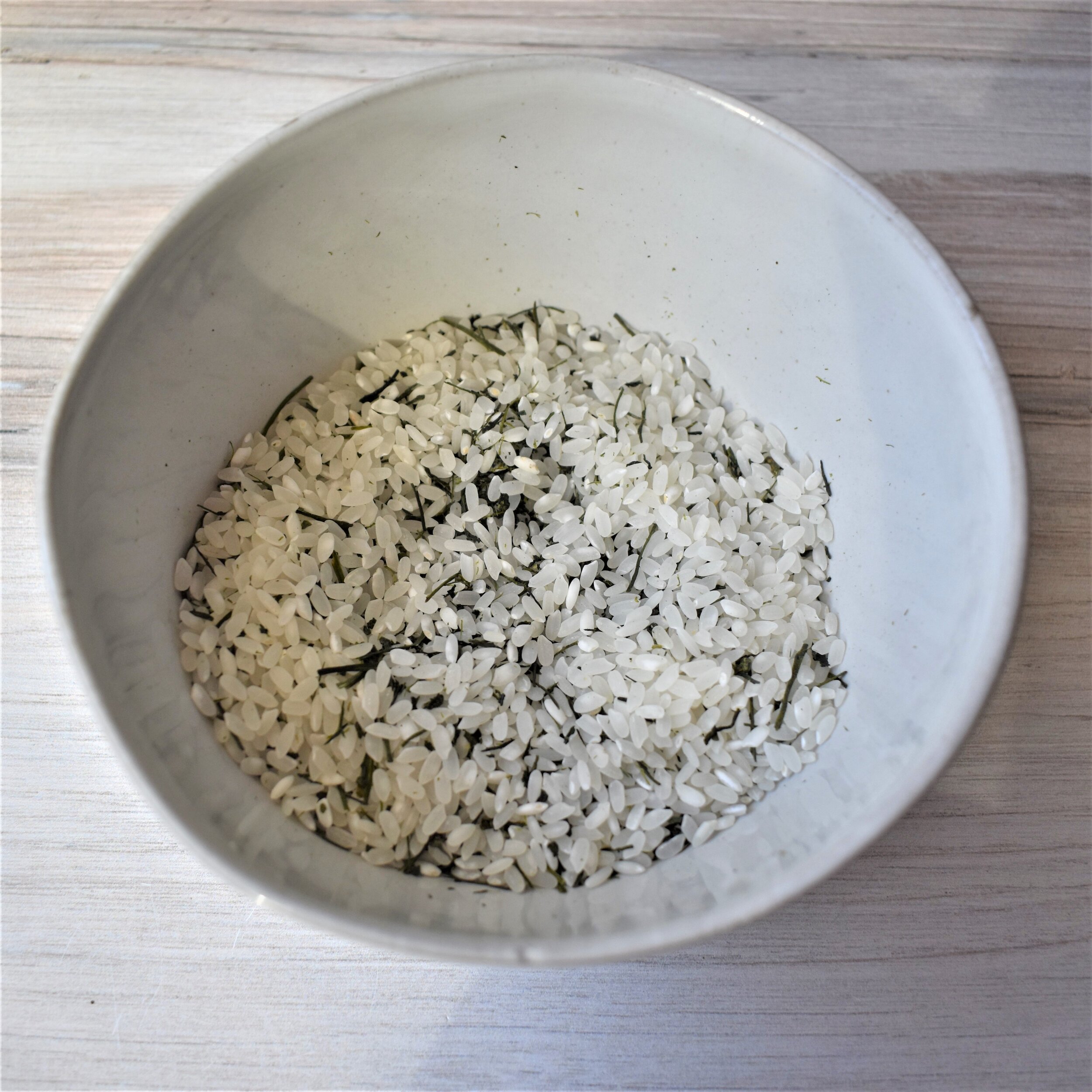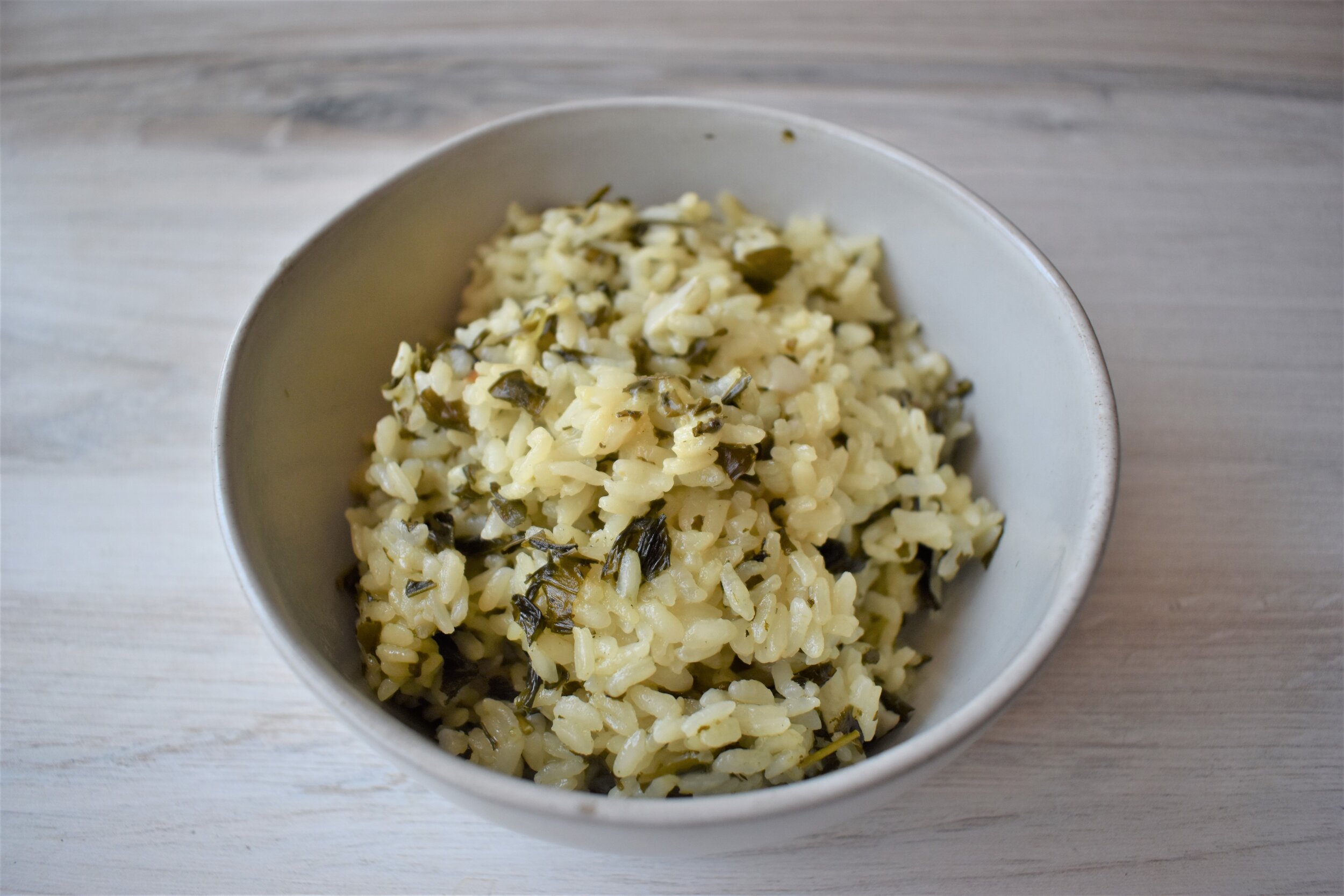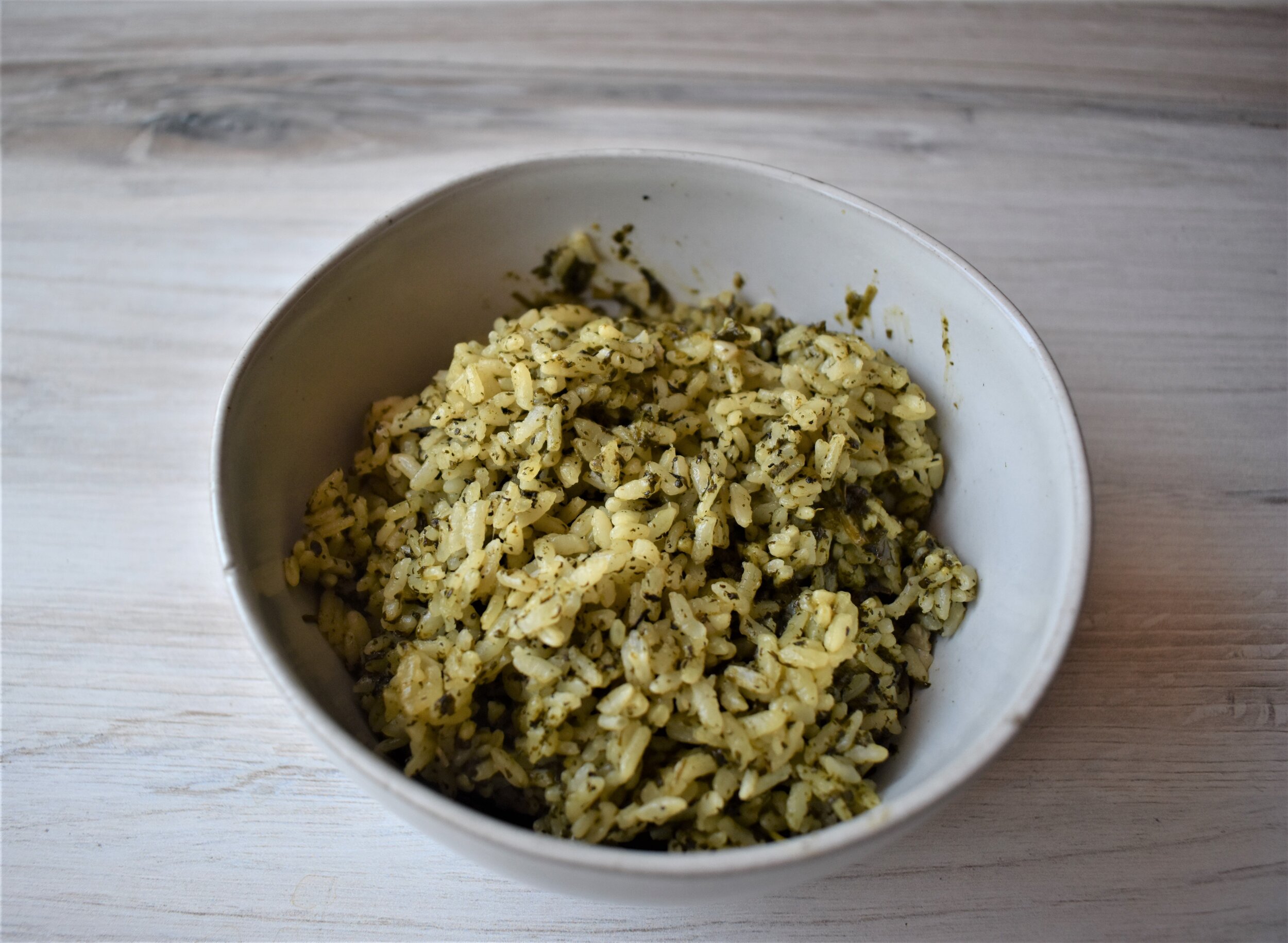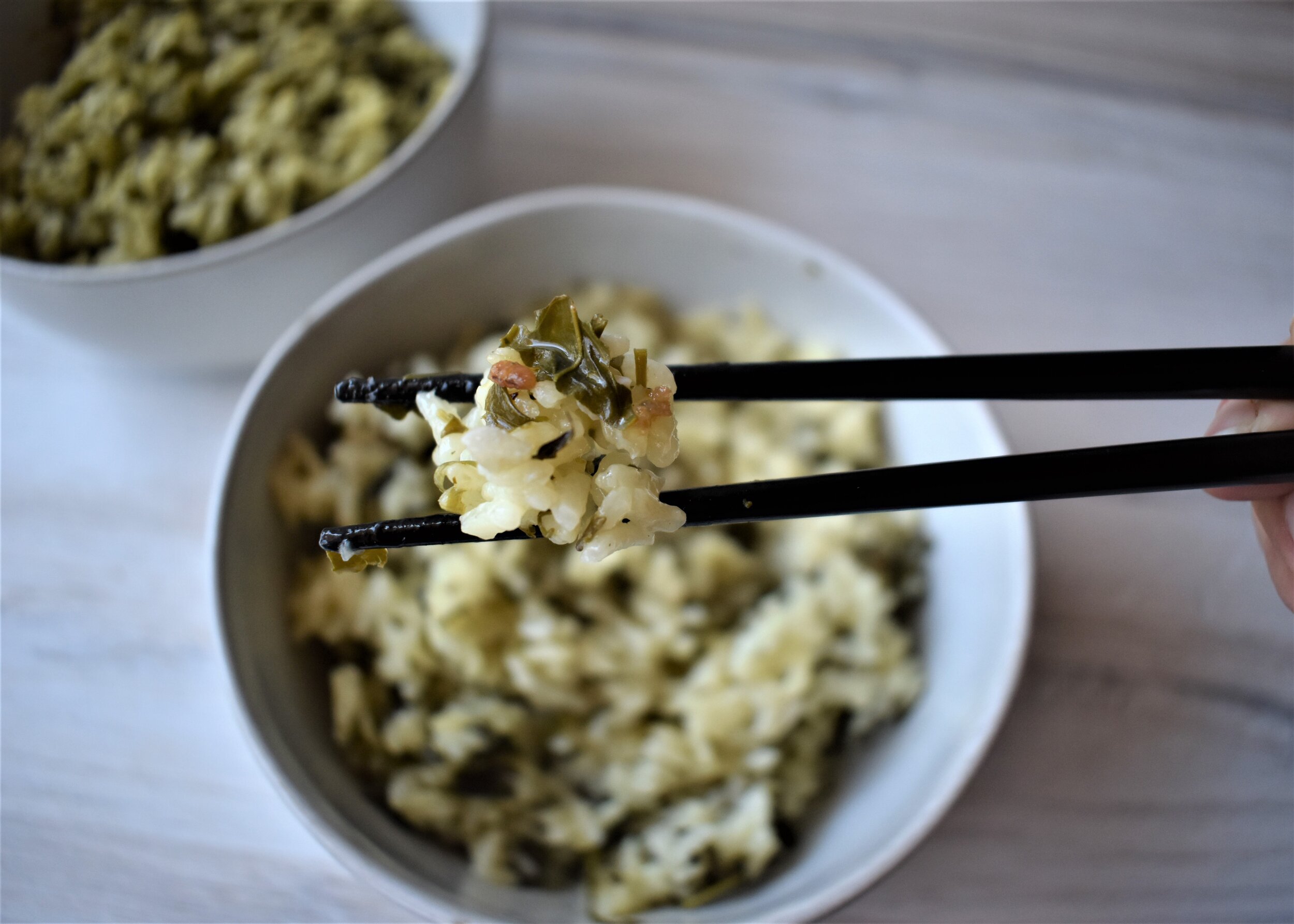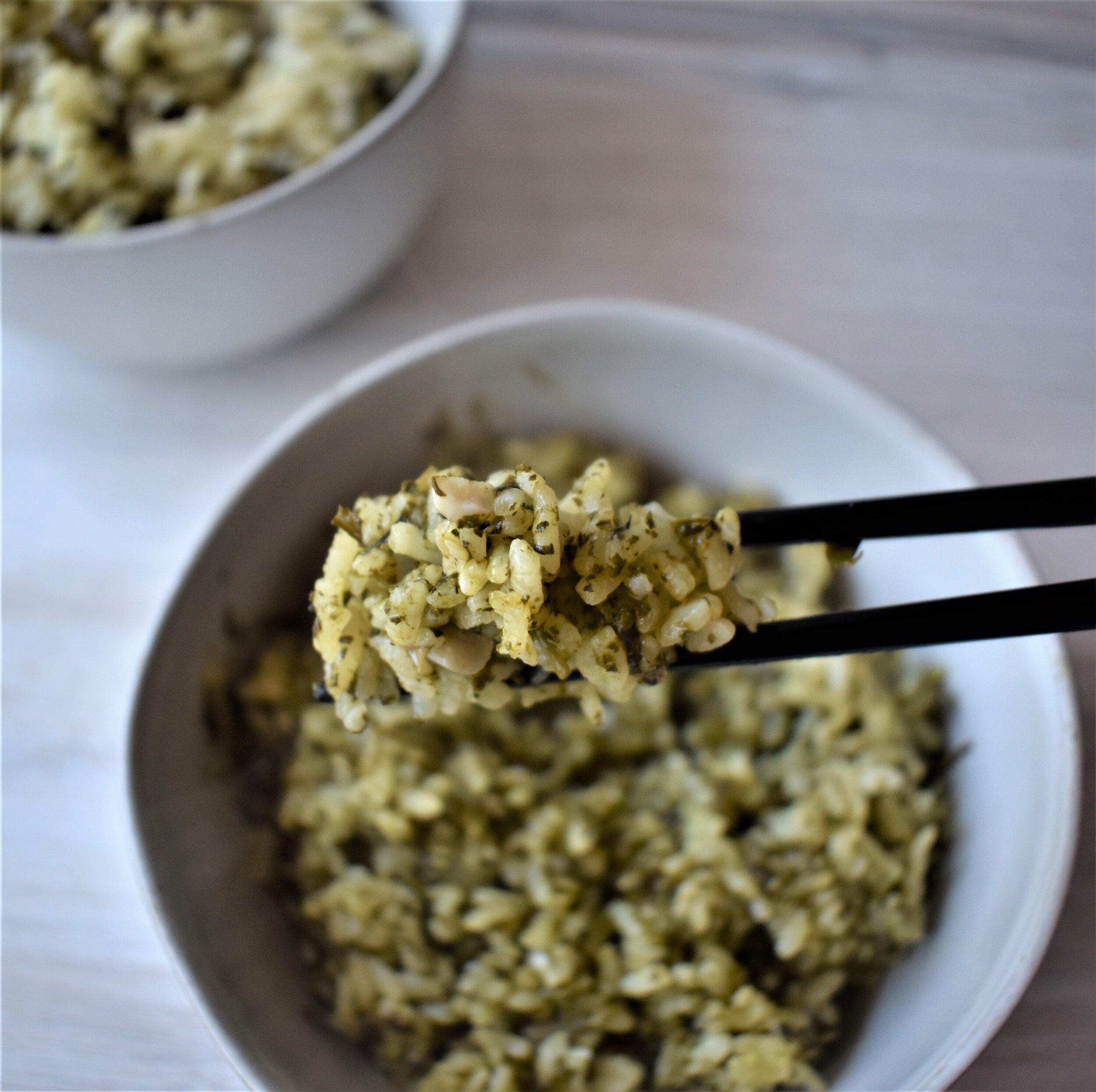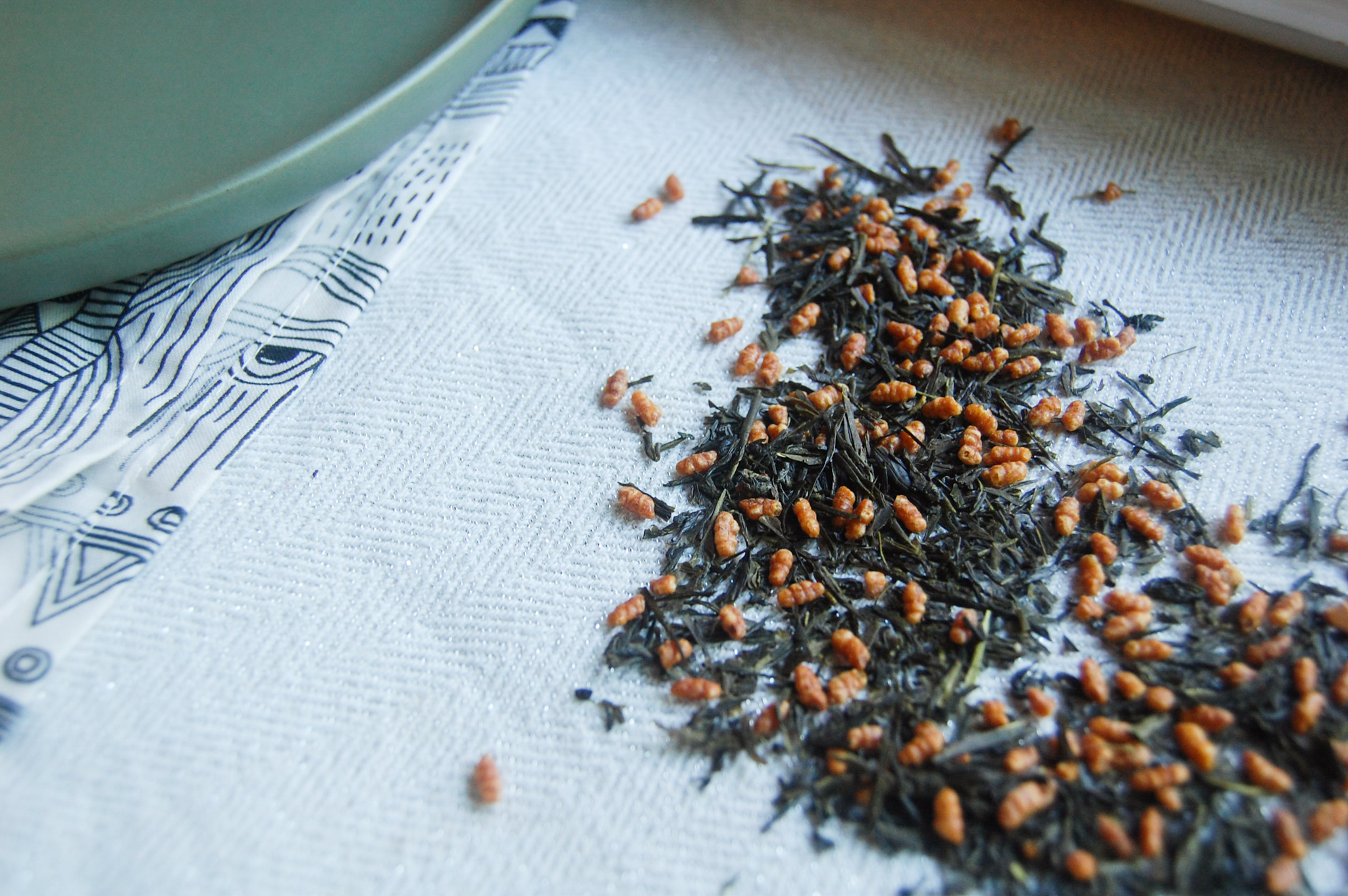Genmaicha Rice Vs. Sencha Rice
If you aren’t following Tea Curious on instagram, you need to! She encourages experimenting with your tea instead of just accepting what people say about tea. She often tests ways of brewing, tasting etc! She recently had a challenge to drink down your green tea collection and guess what, I really needed to participate.
I started out with having some of my old, but surprisingly still good matcha every morning until that was finished and then I turned to my cabinet where I have a few green teas. I’ll be honest, while I don’t dislike green teas they aren’t what I reach for first so they often fall by the wayside. I actually really enjoy cold brewing green tea and drinking it out of a fancy glass with my dinner :)
Since today was the last day, I decided to help drink down my stash by experimenting with cooking! I was set on cooking rice in tea because I love doing that :) I’ve done it a few times and you can find those recipes here:
In this post, I will talk more about the teas as opposed to the cooking method, so if you’re interested in that make sure to check out the linked posts.
Let’s meet the teas: Genmaicha and Sencha.
Both of these teas are actually fairly fresh. The genmaicha is from ippodo tea that I was given to photograph for one of my birthday giveaways! The sencha is a gift that my cousin brought me from his recent trip to Japan. I’m almost 100% certain it is sencha after asking some friends who know Japanese and also comparing it to my other green teas.
Now, I broke several rules of here for the sake of the experiment. I’ve cooked with tea many times and there is a balance between bitterness and all the flavor cooking off. I decided to cold brew the tea with 3 tablespoons of tea to make sure I got a potent brew since I would be using the brew as the water for the rice. I know this sounds like a lot but I need it to be potent so that it isn’t all cooked off which can happen.
So, at first glance the Sencha (on the right) is way darker in color and looks like it will give more of that flavor into the rice. This is the first interesting part of the experiment because this also speaks to when brewing this tea. Both of these brews had the same amount of tea and water and cold crewed for about 10 hours. I didn’t open the leaves up with warm water first, I just filled with vessels with cold water. I cooked each 1/2 cup of rice with one cup of the brewed tea.
At this point, I also kind of knew which rice I would like better. But, let’s continue!
When I cooked the rice, I also put a little less than a tablespoon of the leaves into the dry rice. It may seem like overkill, but I wanted to see which tea would hold up best to the environment.
After cooking, there was a large difference in how green the two rices turned out. You may be able to guess based on the darkness of the brews above.
Since I used tea in the rice as well, the sencha was a little bit more potent in terms of turning the rice color.
So after taking a few bites of each, here is what I thought. Genmaicha was the winner! If we talk about the flavor of green tea, the sencha rice is definitely more overpowering but it is present for the genmaicha but in a more pleasing way.
The sencha was strong but also a bit bitter. I would still totally eat this whole bowl and pairing it with either an egg or veggies and meat will be delicious. But on it’s own, it was just a bit too bitter and it seemed like the leaves kind of fell flat in the cooking process. The one thing that this rice did hold over the genmaicha is that the leaves incorporated better into the rice and it was a bit easier to eat.
The genmaicha rice was my favorite for a few reasons. First, I thing the brew was an nice, even flavor that really shows up in the rice. I think the genmaicha is much better quality tea than the sencha. The genmaicha flavor shows up in the rice but it is also mellow enough to let you enjoy the flavor of the rice as well. I think this would pair well with something a bit heavier. The one downside to the genmaicha was that the larger leaves and rice made it a bit more difficult to eat incorporated as there were some chewier aspects to it.
Genmaicha Herbed Biscuits
So I totally love valentine’s day but I’m also a believer in showing the people you love that you love them everyday! What better way than with some delicious herb biscuits infused with genmaicha that are heart shaped!
Feel free to use whatever herbs you’d like but I used rosemary, thyme, dill and some garlic. I chopped them all together using a food processor!
I found that folding the dough is really important to get a tall and flaky biscuit!
These biscuits are so cute, buttery and the herbs add an incredible taste!
Start off by heating the oven to 450 F
Heat up the milk and when it starts to bubble, take it off the stove and mix in the genmaicha tea and let it sit for a minute then strain and set the milk aside for use later in the recipe.
Mix together the dry ingredients and the fresh herbs mixture!
Make sure the butter is cold and cut into cubes. Cut the butter into the flour mixture with a pastry cutter, 2 knives or even your hands! You want the butter and the flour to resemble crumbs but make sure than not ALL the butter is totally mixed in!
Add in the milk and stir to combine then take the dough and put it on a floured surface.
You want to take the dough and fold it half then smooth our a bit. Do that a few times and this will give the biscuits some volume!
Don’t roll out the dough, pat it down and then take a heart shaped cookie cutter and cut out your shapes.
Use some parchment paper on a baking sheet and cook the biscuits for 12 to 15 minutes or until golden brown!
These are really good with butter or probably with any other savory topping! I personally could have used a bit more salt in these biscuits so I suggest enjoying with salted butter or irish butter!
Roasted Eggplant with Genmaicha Sauce
Fall is here and I always crave squash and eggplant! I try my best to go to the local farmer’s market every weekend or every other weekend to support Maryland Farmers! I happened to pick up 3 nubia eggplants!
My original plan was to make khoresh bademjan which is an Iranian eggplant stew but when I got my Sipsby box and saw that there was genmaicha in it, an idea started brewing! Genmaicha is a Japanes green tea that also had puffed rice in it. This genmaicha is from Yannoko tea and is their organic variation which includes bancha as the green tea.
I love rice so the very first time I tried gemaicha I was in love! Genmaicha is definitely a tea that pairs well with savory food as it has the grassy green tea flavor as well as some roasted notes due to the rice. I decided to try a sauce using genmaicha to top the eggplants with!
In my recipe you’ll see that I said to let the eggplants “sweat".” When we prepare eggplants for the khoresh I mentioned above, you peel and slice the eggplants then salt them. After a little bit, you’ll see beads of liquid on them hence the “sweat"! This helps rid the eggplants of some of the bitterness. You are welcomed to fry the eggplants instead of baking but I love to bake them. With a little olive oil, S + P, they get browned and a bit crispy on the edges!
The baking time really depends on your preference and also how thick you sliced your eggplants. I wanted to give a little advice when slicing. Sometimes slicing thin can help things cook quicker, but with eggplant in the oven I’ve noticed that if they are sliced too thin you really lose most of the eggplant.
When doing this sauce I think it’s best to have all your ingredients prepared before you start so that you can focus on the sauce itself. When you brew the genmaicha tea, make sure to follow brewing instructions on the package. For reference, brewing temperature is 176F and steep for 30-60 seconds. You can do multiple infusions.
One other brewing note is about strength. In my other recipes I sometimes brew the tea on the longer side so that it is more potent in the dish since many times it is being cooked. Be cautious of applying that to genmaicha. I find genmaicha to be pretty delicate and you wouldn’t want the tea to be bitter and then transfer that taste to your meal!
The genmaicha helps cook the spinacha bit more and once it’s reduced use as much boursin as you’d like to thicken it. I could definitely use more cheese but was trying to keep this a semi helathy recipe :D I did want to note that I used boursin because I had some, it’s creamy texture and the fact that it is already flavored with garlic and herb which I think went well with everything else. You could definitely experiment with other cheeses but be careful of using one that is too strong as it will likely overpower any notes of the genmaicha.
I thought this sauce turned out well and it paired well with the eggplant! The sauce definitely has an earthy taste which is thanks to the genmaicha!
A fancy but easy meal for a day when you have time to make yourself a nice meal or use at a party!
